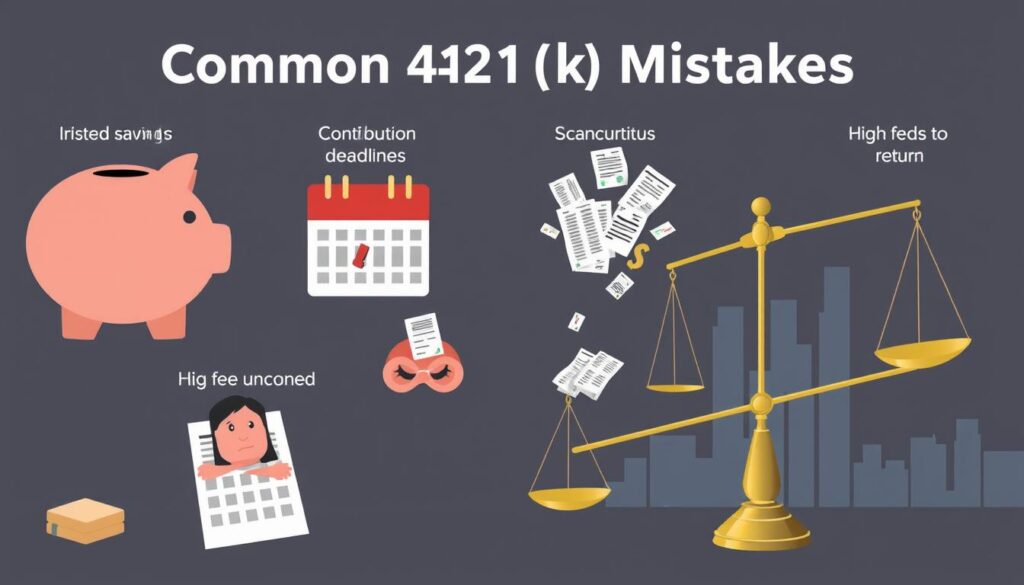To get the most out of a 401(k), you should be aware of the contribution limit set by the Internal Revenue Service (IRS). For 2024, that limit is $23,000 if you’re under age 50, and $30,500 if you’re age 50 or older, thanks to an up to $7,500 catch-up contribution. Maximizing 401(k) contributions can significantly impact your retirement savings, allowing you to boost your financial security for the future. By understanding the current contribution limits and making the most of your 401(k) plan, you can set yourself up for long-term financial success and maximize your retirement savings.
Maximizing 401(k) contributions is a key step in securing your financial future. By taking advantage of the tax benefits and investment options available, you can make the most of your retirement savings and achieve your long-term financial goals. Whether you’re just starting to plan for retirement or are nearing the end of your working years, it’s essential to understand how to maximize 401(k) contributions and make the most of your retirement savings.
Table of Contents
Key Takeaways
- Maximizing 401(k) contributions can significantly impact your retirement savings.
- The 2024 contribution limit for 401(k) plans is $23,000 for individuals under age 50 and $30,500 for those age 50 or older.
- Catch-up contributions can be made by individuals age 50 or older, allowing them to contribute an additional $7,500 to their 401(k) plan.
- Understanding the current contribution limits and making the most of your 401(k) plan can help you boost your retirement savings.
- Seeking guidance from a financial advisor can help you optimize your retirement savings and investments.
- Maximizing 401(k) contributions is a key step in securing your financial future and achieving your long-term financial goals.
- Regularly reviewing and adjusting your 401(k) contributions can help you stay on track with your retirement savings goals.
Understanding Your 401(k) Basics
When it comes to retirement savings, understanding your 401(k) basics is crucial. A 401(k) plan is a type of defined contribution plan that allows you to contribute a portion of your paycheck to a retirement account on a pre-tax basis. This means that your contributions are made before taxes are taken out, reducing your taxable income for the year.
There are different types of 401(k) plans available, including traditional and Roth 401(k) plans. Traditional 401(k) plans allow you to contribute pre-tax dollars, while Roth 401(k) plans allow you to contribute after-tax dollars. Both types of plans offer tax benefits, but the key difference lies in when you pay taxes on your contributions and earnings.
What Is a 401(k) Plan?
A 401(k) plan is a type of retirement savings plan that is sponsored by an employer. It allows employees to contribute a portion of their paycheck to a retirement account on a pre-tax basis. The plan may also offer matching contributions from the employer, which can help increase your retirement savings over time.
Types of 401(k) Plans Available
There are two main types of 401(k) plans available: traditional and Roth. Traditional 401(k) plans allow you to contribute pre-tax dollars, while Roth 401(k) plans allow you to contribute after-tax dollars. Both types of plans offer tax benefits, but the key difference lies in when you pay taxes on your contributions and earnings.
Key Benefits of 401(k) Investments
The key benefits of 401(k) investments include tax benefits, potential employer matching contributions, and the ability to save for retirement on a consistent basis. By contributing to a 401(k) plan, you can reduce your taxable income for the year, potentially lower your tax liability, and build a nest egg for retirement.
- Tax benefits: Contributions to a traditional 401(k) plan are made pre-tax, reducing your taxable income for the year.
- Potential employer matching contributions: Many employers offer matching contributions to 401(k) plans, which can help increase your retirement savings over time.
- Consistent savings: By contributing to a 401(k) plan, you can save for retirement on a consistent basis, which can help you build a nest egg over time.
Current 401(k) Contribution Limits for This Year
The IRS sets the 401(k) contribution limits each year, and for 2024, the limit is $23,000 for investors under age 50, and $30,500 for investors age 50 and older. These limits are crucial to understand when planning your retirement savings. The IRS limits are in place to ensure that individuals are saving for their future while also considering their current financial situation.
Here are the key 401(k) contribution limits to keep in mind:
- $23,000 for investors under age 50
- $30,500 for investors age 50 and older, including a $7,500 catch-up contribution
It’s essential to be aware of these limits to maximize your contributions and make the most of your retirement savings.
Understanding the IRS limits and 401(k) contribution limits can help you create a solid retirement plan. By contributing the maximum allowed amount, you can ensure a more secure financial future.
| Age Group | Contribution Limit |
|---|---|
| Under 50 | $23,000 |
| 50 and older | $30,500 (including $7,500 catch-up) |
How to Maximize 401(k) Contributions Effectively
Maximizing 401(k) contributions requires a strategic approach, and one of the most effective ways to do this is by setting up automatic contributions. By automating your contributions, you can ensure that you’re consistently saving for retirement without having to think about it. Additionally, making gradual increases to your contributions over time can have a significant impact on your long-term savings.
For example, increasing your retirement contributions by 1% of your annual salary each year can yield tens of thousands of dollars more in a retirement account by the time you retire. Furthermore, taking advantage of catch-up contributions can provide an extra boost to your retirement savings, especially for those aged 50 and older.
Here are some tips to help you maximize your 401(k) contributions:
- Start by setting up automatic contributions to make saving easier and less prone to being neglected.
- Gradually increase your contribution percentage over time to take advantage of compound interest.
- Consider taking advantage of catch-up contributions if you’re eligible, to add an extra $7,500 to your annual contributions.
By following these tips and making consistent, gradual increases to your contributions, you can maximize your 401(k) contributions and set yourself up for a more secure retirement.
| Contribution Type | Annual Limit | Catch-up Contribution |
|---|---|---|
| 401(k) Contributions | $23,000 | $7,500 (aged 50 and older) |
Understanding Employer Matching Programs
Many employers offer to match your contributions up to a certain percentage of your salary. To get the full match, you must also contribute that percentage. On average, employer match amounts to 4.6% of compensation, with the median match at 4.0%. The highest recorded employer match has been over 7% of compensation.
The most common formula observed is $0.50 per dollar on the first 6% of compensation. This means that if you contribute 6% of your salary, your employer will contribute 3%.
Common Matching Formulas
- $0.50 per dollar on the first 6% of compensation
- 100% match up to a certain percentage of compensation
- Partial matching, where the employer matches part of the employee’s contribution
Vesting Schedules Explained
Vesting schedules typically have a five-year period, determining how much of the employer’s contributions the employee can keep if they leave the company. This means that if you leave the company before the vesting period is complete, you may not be able to keep all of the employer’s contributions.
It’s essential to understand employer matching programs and vesting schedules to maximize your 401(k) contributions. By contributing enough to get the full match, you can significantly increase your retirement savings.
| Employer Match | Vesting Schedule |
|---|---|
| 4.6% of compensation | 5 years |
| 100% match up to 6% of compensation | 3 years |
Strategic Timing of Your Contributions
When it comes to maximizing your 401(k) contributions, contribution timing plays a crucial role. Consider aligning your contribution increases with pay raises or bonuses to make the most of your retirement savings. For instance, if you get a raise, you might also consider automatically upping your 401(k) contributions to take advantage of the increased income.
A well-planned paycheck allocation strategy can help you make the most of your contributions. You can start by allocating a fixed percentage of your income towards your 401(k) account and then adjust it as needed. It’s essential to find a balance between saving for retirement and meeting your current financial needs.
- Increasing contributions with pay raises or bonuses
- Automating contributions to make saving easier and less prone to being neglected
- Reviewing and adjusting contribution rates regularly to ensure they align with your financial goals
By taking a strategic approach to your 401(k) contributions, you can make the most of your retirement savings and set yourself up for long-term financial success.
Balancing 401(k) Contributions with Other Financial Goals
When it comes to maximizing 401(k) contributions, it’s essential to consider your overall financial balance. This includes maintaining an emergency fund to cover 3-6 months of living expenses, as well as managing debt effectively. By prioritizing these financial goals, you can ensure a stable foundation for your retirement savings.
A well-structured approach to financial planning involves evaluating your debt management strategies and adjusting your 401(k) contributions accordingly. For instance, if you have high-interest debt, it may be wise to allocate a larger portion of your income towards debt repayment before maximizing your 401(k) contributions.
Here are some key considerations for balancing your financial goals:
- Emergency fund: Aim to save 3-6 months’ worth of living expenses in an easily accessible savings account.
- Debt management: Focus on paying off high-interest debt, such as credit card balances, as soon as possible.
- Financial balance: Regularly review your budget to ensure you’re allocating your income effectively towards your financial goals.
By taking a holistic approach to financial planning, you can achieve a better financial balance and make progress towards your retirement goals. Remember to review and adjust your strategy regularly to ensure you’re on track to meet your objectives.
| Financial Goal | Recommended Allocation |
|---|---|
| Emergency Fund | 3-6 months’ worth of living expenses |
| Debt Repayment | High-interest debt: as much as possible |
| 401(k) Contributions | At least 10% of income, including employer contributions |
Tax Benefits and Implications
When it comes to 401(k) plans, understanding the tax benefits and implications is crucial. Contributions to a traditional 401(k) reduce taxable income in the year they are made, resulting in lower immediate income tax payments. On the other hand, Roth 401(k) contributions are made with after-tax dollars, offering tax savings upon withdrawal depending on income and tax rate.
The tax implications of 401(k) plans can be complex, but they can also provide significant benefits. For example, contributions to a qualified 401(k) plan can lower yearly tax bills through the Saver’s Credit by up to $2,000. Additionally, withdrawals from a tax-deferred 401(k) are taxed upon retrieval, typically at a lower rate during retirement compared to working years.
Here are some key points to consider when it comes to 401(k) tax benefits and implications:
- Contributions to a traditional 401(k) reduce taxable income
- Roth 401(k) contributions are made with after-tax dollars
- Withdrawals from a tax-deferred 401(k) are taxed upon retrieval
- Contributions to a qualified 401(k) plan can lower yearly tax bills through the Saver’s Credit
To illustrate the tax benefits and implications of 401(k) plans, consider the following table:
| 401(k) Plan Type | Tax Benefits | Tax Implications |
|---|---|---|
| Traditional 401(k) | Reduces taxable income | Taxed upon withdrawal |
| Roth 401(k) | Tax-free growth and withdrawal | Contributions made with after-tax dollars |
Investment Options Within Your 401(k)
When it comes to 401(k) investment options, understanding your personal risk tolerance is crucial. This involves assessing your ability to withstand market fluctuations and making informed decisions about your investments. A key aspect of managing risk tolerance is diversification, which helps spread investments across various asset classes to minimize risk. Diversification can be achieved by investing in a range of securities, including stocks, bonds, and mutual funds.
One popular 401(k) investment option is target date funds, which offer a hands-off approach to investing. These funds automatically adjust the risk level as the investor approaches their planned retirement year, providing a convenient and hassle-free option for those who prefer not to actively manage their portfolio. Additionally, many 401(k) plans offer a selection of mutual funds, including ETFs or index funds, allowing investors to create a balanced portfolio that aligns with their risk tolerance and investment goals.
- Assessing personal risk tolerance to make informed investment decisions
- Diversification to minimize risk and maximize returns
- Understanding the pros and cons of target date funds and other investment options
By taking the time to understand 401(k) investment options and making informed decisions, investors can create a personalized portfolio that aligns with their financial goals and risk tolerance, ultimately helping to secure their financial future.
Common Mistakes to Avoid
When managing your 401(k), it’s essential to be aware of common 401(k) mistakes that can impact your retirement savings. One significant error is not contributing enough to get the full employer match, which can result in missing out on essentially free money. Another mistake is cashing out when changing jobs, which can lead to a 10% early withdrawal penalty tax and failure to benefit from the power of compounding on funds held in a retirement account for many additional years.
Other retirement savings errors include neglecting to rebalance investments, excessive trading, and not taking advantage of catch-up contributions for those aged 50 or older. To avoid these pitfalls, consider the following:
- Evaluate your current contribution rate and consider increasing it by 1-2% annually to maximize compound growth.
- Rebalance your investments annually to maintain an optimal asset allocation.
- Avoid excessive trading, as it can result in significant fees and mistiming of moves.
By being mindful of these common 401(k) mistakes and taking proactive steps to avoid them, you can help ensure a more secure and prosperous retirement. Remember to always prioritize your retirement savings and seek professional advice if needed.
| Mistake | Consequence | Solution |
|---|---|---|
| Not contributing enough | Missing out on employer match | Increase contribution rate |
| Cashing out when changing jobs | 10% early withdrawal penalty tax | Consider rolling over to a new 401(k) or IRA |
| Excessive trading | Significant fees and mistiming of moves | Rebalance investments annually |
Making Catch-up Contributions After Age 50
For individuals aged 50 and older, making catch-up contributions to their 401(k) can significantly boost their retirement savings. The IRS allows workers in this age group to contribute an additional $7,500 annually as a catch-up contribution, bringing the total contribution limit to $30,500 in 2024.
This opportunity is particularly valuable for those who may have started saving for retirement later in life or who want to make up for lost time. By taking advantage of catch-up contributions, individuals can potentially save over an extra $110,000 in 15 years, making a substantial difference in their retirement portfolio.
Eligibility requirements for catch-up contributions are straightforward: individuals must be 50 years or older and have a 401(k) plan that permits catch-up contributions. The maximum catch-up amount is $7,500 in 2024, and this amount is indexed to inflation starting in 2024.
Some key points to consider when making catch-up contributions include:
- Only 15% of 401(k) participants take advantage of catch-up contributions, leaving significant room for growth.
- Almost all 401(k) plans permit catch-up contributions, but the majority of workers do not earn enough to contribute the maximum amounts.
- Making catch-up contributions can reduce tax bills, with potential savings of $10,675 in 2024 for a worker in the 35% tax bracket contributing the full $30,500.
Rolling Over Previous 401(k) Accounts
When changing jobs or retiring, it’s essential to consider what to do with your previous 401(k) accounts. Instead of leaving them with your former employer, you can roll them over to your new employer’s plan or to an individual retirement account (IRA). This process, known as a 401(k) rollover, can simplify your retirement savings management by consolidating your accounts into one.
A 401(k) rollover to an IRA can offer more investment choices and potentially lower fees. However, it’s crucial to understand the rules and potential tax implications. For instance, rolling over pretax savings into a Roth IRA will incur ordinary income tax, but it can provide tax-free distributions in the future.
To execute a 401(k) rollover, you’ll need to choose a qualified retirement account, initiate the rollover with proper documentation, and complete it within 60 days. It’s also important to consider the potential downsides, such as loss of investment options and associated fees. Consulting with financial professionals can help you navigate the process and choose the best strategy for your individual circumstances and goals.
Some benefits of account consolidation include simplified monitoring of your retirement savings and potentially lower fees. By rolling over your previous 401(k) accounts, you can take control of your retirement planning and make informed decisions about your financial future.
Monitoring and Adjusting Your Contributions
Regularly reviewing your 401(k) contributions is essential to ensure you’re on track to meet your retirement goals. A 401(k) review can help you identify areas for improvement and make necessary contribution adjustments. This process involves assessing your current contribution rate, investment portfolio, and employer matching contributions.
To conduct a effective 401(k) review, consider the following steps:
- Check your current contribution rate and adjust it if necessary to maximize your employer match.
- Review your investment portfolio to ensure it aligns with your risk tolerance and retirement goals.
- Assess your progress toward your retirement goals and make contribution adjustments as needed.
By regularly reviewing and adjusting your 401(k) contributions, you can make informed decisions about your retirement savings and stay on track to meet your goals. Remember to take advantage of catch-up contributions if you’re 50 or older, and consider automating your contributions to make saving easier and less prone to being neglected.
Special Considerations During Market Volatility
During periods of market volatility, it’s essential to maintain a long-term perspective and avoid making impulsive decisions about your 401(k) strategy. Historical data shows that stocks tend to recover over time, so it’s crucial to stay calm and adhere to your investment plan.
A key consideration is to continue contributing to your 401(k) during market downturns, as this can be beneficial in the long term. Additionally, it’s recommended to review your portfolio regularly to ensure that your asset allocation aligns with your retirement goals.
Some strategies to consider during market volatility include:
- Rebalancing your portfolio to maintain an optimal asset allocation
- Avoiding panic selling and staying invested for the long term
- Taking advantage of dollar-cost averaging to reduce the impact of market fluctuations
It’s also important to remember that market volatility is a natural part of the investment cycle, and a well-diversified 401(k) strategy can help you weather any storms. By staying informed, maintaining a long-term perspective, and avoiding impulsive decisions, you can help ensure that your retirement savings remain on track.
Planning for Required Minimum Distributions
As you approach retirement, it’s essential to consider required minimum distributions (RMDs) and how they will impact your 401(k) planning. RMDs are the minimum amounts you must withdraw from your traditional IRA, SEP IRA, SIMPLE IRA, and retirement plan accounts each year, starting at age 73.
According to the Secure Act 2.0, effective December 2022, the age for starting RMDs has increased from 72 to 73. This change allows you to keep your money in your retirement accounts for a longer period, but it’s crucial to understand the rules and plan accordingly. You can find more information on RMD planning and how to make the most of your retirement savings.
Here are some key points to consider when planning for RMDs:
- Participants typically must start taking withdrawals from traditional IRA, SEP IRA, SIMPLE IRA, and retirement plan accounts when they reach age 73.
- Roth IRAs and Designated Roth accounts have different rules; withdrawals are not required until the account owner’s death, but beneficiaries are subject to RMD rules.
- The first RMD is due by April 1, 2025, and the second by December 31, 2025, based on account balances at specific dates.
It’s essential to take the correct amount of RMDs on time every year to avoid penalties. You can withdraw more than the RMD amount if desired, but it’s crucial to understand the tax implications. By incorporating RMD planning into your overall retirement strategy, you can ensure a steady income stream and make the most of your retirement savings.
Remember, RMD rules apply to employer-sponsored retirement plans and traditional IRAs and IRA-based plans like SEPs, SARSEPs, and SIMPLE IRAs. Different life expectancy tables are used to calculate RMD amounts based on specific situations.
By understanding the rules and planning ahead, you can minimize the impact of RMDs on your retirement income and ensure a secure financial future. Consider consulting with a financial advisor to create a personalized RMD planning strategy that meets your unique needs and goals.
Conclusion: Securing Your Financial Future Through Smart 401(k) Management
As we’ve explored, effectively maximizing your 401(k) contributions can be a game-changer in securing a comfortable financial future. By understanding the power of compound interest, taking advantage of employer matches, and leveraging tax-advantaged investment opportunities, you can put your retirement savings on the fast track.
Remember, starting early and consistently contributing to your 401(k) plan is crucial. The earlier you begin, the more time your money has to grow through the magic of compound interest. Additionally, diversifying your investments and regularly reviewing your portfolio can help manage risk and ensure your savings are working hard for you.
Whether you’re just starting out or nearing retirement, staying informed and making strategic decisions about your 401(k) plan can have a profound impact on your financial future and retirement planning. Stay vigilant, seek professional guidance when needed, and let your 401(k) contributions be a reliable foundation for your long-term financial security.
FAQ
What is a 401(k) plan?
A 401(k) plan is an employer-sponsored retirement savings account that allows employees to contribute a portion of their paycheck, often with an employer match, to invest for the future.
What are the different types of 401(k) plans?
The main types of 401(k) plans are traditional 401(k)s and Roth 401(k)s. Traditional 401(k)s offer tax-deferred growth, while Roth 401(k)s provide tax-free withdrawals in retirement.
What are the key benefits of investing in a 401(k)?
Key benefits of a 401(k) include tax-advantaged growth, employer matching, and the ability to save consistently for retirement through automatic payroll deductions.
What are the current 401(k) contribution limits?
The standard 401(k) contribution limit for 2023 is ,500, with an additional ,500 catch-up contribution allowed for those aged 50 and over.
How can I maximize my 401(k) contributions?
To maximize 401(k) contributions, you can set up automatic contributions, gradually increase your contribution percentage, and take advantage of catch-up contributions if eligible.
How do employer matching programs work?
Employer matching programs typically involve the employer contributing a certain percentage or amount to your 401(k) based on your own contributions. Understanding the matching formula and vesting schedule is crucial.
When is the best time to contribute to my 401(k)?
There are various strategies for timing 401(k) contributions, such as spreading them throughout the year or front-loading contributions. Aligning contributions with pay raises or bonuses can also be effective.
How do I balance 401(k) contributions with other financial goals?
It’s important to maintain an emergency fund, manage debt, and consider other investment opportunities while prioritizing 401(k) contributions. A holistic approach to financial planning is key.
What are the tax benefits and implications of 401(k) contributions?
401(k) contributions can provide tax advantages, such as deferred taxation or tax-free growth, depending on the type of plan (traditional or Roth). Understanding the long-term tax impact is crucial.
What investment options are available within a 401(k)?
401(k) plans typically offer a range of investment options, including mutual funds, target date funds, and individual stocks or bonds. Understanding your risk tolerance and diversification strategies is important.
What are common mistakes to avoid with 401(k) management?
Common mistakes include not contributing enough to receive the full employer match, cashing out 401(k) accounts when changing jobs, and neglecting to rebalance investments regularly.
How can I make catch-up contributions to my 401(k) after age 50?
Individuals aged 50 and older can make additional catch-up contributions to their 401(k) plans, with a maximum catch-up limit of ,500 for 2023.
How do I roll over a 401(k) from a previous employer?
Rolling over a 401(k) from a previous employer can help consolidate your retirement savings. There are different rollover options, such as transferring the funds to a new employer’s plan or an IRA, to consider.
How often should I review and adjust my 401(k) contributions?
It’s recommended to review and potentially adjust your 401(k) contributions periodically, such as annually or whenever there are significant life or financial changes.
How should I manage my 401(k) during market volatility?
During periods of market volatility, it’s important to maintain a long-term perspective, consider dollar-cost averaging, and potentially adjust your investment allocations based on your risk tolerance and time horizon.
How do Required Minimum Distributions (RMDs) impact my 401(k) planning?
RMDs are mandatory withdrawals that must be taken from 401(k) accounts (and other retirement accounts) starting at age 72. Understanding RMD rules and planning for these withdrawals is an important aspect of 401(k) management.









